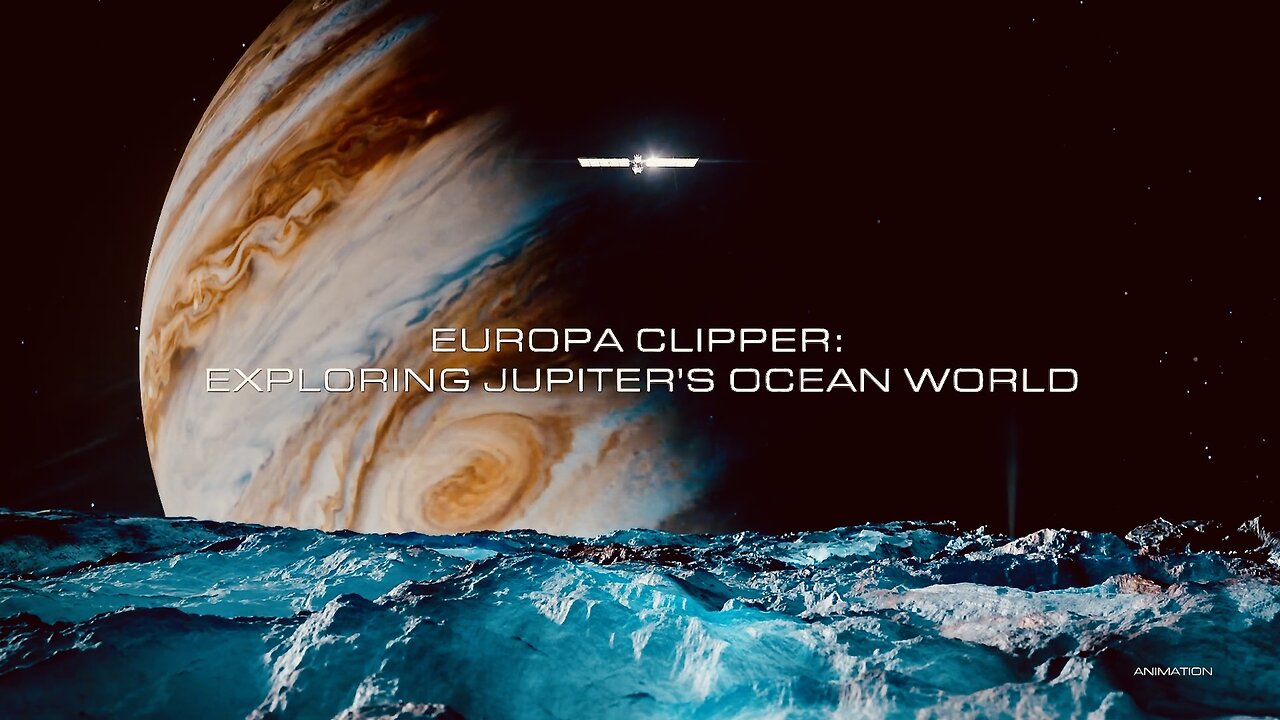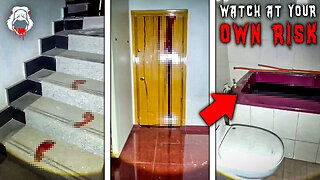Premium Only Content

NASA's Mission To Jupiter's Water Moon, Europa - Arriving 2030
Key Facts About Europa Clipper - Spacecraft Type: Orbiter - Launch Window Opens: October 10, 2024 - Science Instruments: 9 - Science Target: Europa - Jupiter Orbit Insertion: April 2030 - What will Europa Clipper do? Europa Clipper’s main science goal is to determine whether there are places below the surface of Jupiter’s icy moon, Europa, that could support life. The mission’s three main science objectives are to understand the nature of the ice shell and the ocean beneath it, along with the moon’s composition and geology. The mission’s detailed exploration of Europa will help scientists better understand the astro-biological potential for habitable worlds beyond our planet.
NASA's Europa Clipper spacecraft will perform dozens of close flybys of Jupiter’s moon Europa, gathering detailed measurements to investigate the moon. The spacecraft, in orbit around Jupiter, will make nearly 50 flybys of Europa at closest-approach altitudes as low as 16 miles (25 kilometers) above the surface, soaring over a different location during each flyby to scan nearly the entire moon.
NASA’s Largest Planetary Mission Spacecraft
With its massive solar arrays and radar antennas, Europa Clipper is the largest spacecraft NASA has ever developed for a planetary mission. The spacecraft has large solar arrays to collect enough light for its power needs as it operates in the Jupiter system, which is more than five times as far from the Sun as Earth. The spacecraft will be about 16 feet (5 meters) in height. With its arrays deployed, the spacecraft spans more than 100 feet (30.5 meters) and has a dry mass (no propellant in the tanks) of 7,145 pounds (3,241 kg).
Designed for Jupiter’s Tough Radiation Environment
Because Europa is bathed in radiation trapped in Jupiter's magnetic field, Europa Clipper's payload and other electronics will be enclosed in a thick-walled vault. This strategy of armoring up to go to Jupiter with a radiation vault was developed and successfully used for the first time by NASA’s Juno spacecraft. The vault walls – made of titanium and aluminum – will act as a radiation shield against most of the high-energy atomic particles, dramatically slowing down degradation of the spacecraft's electronics.
Life Beyond Earth
Europa shows strong evidence for an ocean of liquid water beneath its icy crust. Beyond Earth, Europa is considered one of the most promising places where we might find currently habitable environments in our solar system. Europa Clipper will determine whether there are places below Europa’s surface that could support life.
The spacecraft's payload will include cameras and spectrometers to produce high-resolution images and composition maps of Europa's surface and thin atmosphere, an ice-penetrating radar to search for subsurface water, and a magnetometer and gravity measurements to unlock clues about its ocean and deep interior. The spacecraft will also carry a thermal instrument to pinpoint locations of warmer ice and perhaps recent eruptions of water, and instruments to measure the composition of tiny particles in the moon's thin atmosphere and surrounding space environment.
#space #spaceexploration #discovery
-
 49:16
49:16
Knowledge Land
3 days agoThe Prehistoric Volcano That Nearly Wiped Out All Humanity - Full Documentary
352 -
 56:45
56:45
VSiNLive
5 hours ago $4.64 earnedFollow the Money with Mitch Moss & Pauly Howard | Hour 1
51.6K2 -
 52:44
52:44
Candace Show Podcast
5 hours agoMy Conversation with Only Fans Model Lilly Phillips | Candace Ep 122
63K240 -
 UPCOMING
UPCOMING
tacetmort3m
5 hours ago🔴 LIVE - RELIC HUNTING CONTINUES - INDIANA JONES AND THE GREAT CIRCLE - PART 5
30.2K -
 26:52
26:52
Silver Dragons
4 hours agoCoin Appraisal GONE WRONG - Can I Finally Fool the Coin Experts?
23.5K2 -
 UPCOMING
UPCOMING
Bare Knuckle Fighting Championship
10 hours agoBKFC on DAZN HOLLYWOOD WARREN vs RICHMAN WEIGH IN
16K -
 6:49:16
6:49:16
StoneMountain64
8 hours agoNew PISTOL meta is here?
28.3K1 -
 20:58
20:58
Goose Pimples
10 hours ago7 Ghost Videos SO SCARY You’ll Want a Priest on Speed Dial
16K3 -
 2:24:59
2:24:59
The Nerd Realm
8 hours ago $2.61 earnedHollow Knight Voidheart Edition #09 | Nerd Realm Playthrough
33.9K2 -
 1:21:14
1:21:14
Awaken With JP
9 hours agoDrones are for Dummies - LIES Ep 70
115K54